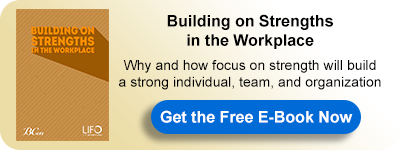Ways to Build the Strengths of Your Employees
1. Name the strengths
Don’t assume that employees know their strengths. People often take their most powerful talents for granted. Meet individually with team members to discuss how they—and you—see their core competencies and strengths. Name each strength out loud and ask how those strengths might be applied to your project.
2. Apply individual strengths to achieve the team’s overall goals
Help your team understand each other’s strengths and how these talents unite to create a powerful picture and improve teamwork skills. Speak to the strengths of individual team members in the presence of project compatriots. Suggest how the team might take advantage of others’ strengths and listen to what the team has to say. Look beyond your projects to the wider organization to see whether demonstrated strengths can be used in neglected areas of the broader business.
3. Assign team projects based on employees’ strengths
You would never intentionally assign tasks based on weaknesses, but you might overlook strengths unless they’ve surfaced. Instead, you need to pay more focus while assessing the tasks and assigning them to the right team member mapped on their strengths. This will guarantee better results and higher team spirit.
4. Incorporate strengths into performance conversations and reviews
Help employees set goals based on their core competencies and strengths, and build on these strength-based goals in your regular performance reviews. You can relate their successes to their strength and suggest better usage of their strengths for better performance.
5. Help employees align their strengths with the expectations and responsibilities of their roles
In the best-case situations, team members’ strengths should align with expectations, but sometimes things go a little off course. Make sure you nurture and guide individuals to focus on their core strengths and then give them goals that align with their talent and responsibilities. You’ll have more contented team members as a result.
6. Ask your organization for some “strength training”
Invest in a course to hone skills that identify and optimize the strength of your team members. This type of training may be something your HR department can deliver, or you might find training outside your organization.
7. Open career-growth opportunities or training for your team
Tell team members that you want to support them if they have a strength they’d like to develop. This encouragement may motivate employees to actively discover their strengths and do what they need to develop their professional skills.
8. Offer training opportunities for employees who show strength in particular areas
Instead of waiting for team members to come to you, you approach them. Let them know what qualities you see in them and make sure they’re willing to build those strengths toward a specific type of career path by sending them to a course or training program. You don’t want to invest in anyone who’s unwilling to put in the effort to use their strengths to benefit the organization.
9. Encourage team members to act as “strengths advocates” to help others use their talents and gifts more fully
Rally members of your team to be budding leaders and motivators within their roles. Imagine how can such strength-based team support enhances the team dynamics and mutual trust, and reinforces this empowering culture within the team.
10. Consider cross-training among teammates who have specific strengths
Form mentoring relationships by matching strong employees with teammates who show a weakness in a corresponding area. This cross-training lets strong employees develop their training abilities, while the mentees receive some good modeling and a chance to strengthen their skills.
11. Allow strong employees to take responsibility for their own career opportunities through special assignments or off-site activities
Let your staff members decide whether to pursue these activities, even if it means shuffling tasks on your project. Don’t push. Developing strength starts with initiative and drive. If an employee doesn’t have either, then it might not be worth the investment.
For more about this topic, download our latest book “Building on Strengths in the Workplace“ for FREE:

